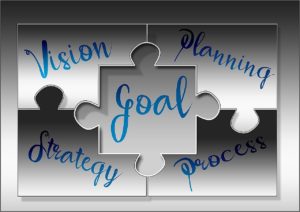October represents the beginning of the final quarter of the year. Q4 is upon us. How are you doing with the goals you have set for yourself personally and professionally?
Goal setting may or may not be your forte. For those who are interested in theory, Dr Edwin Locke and Dr Gary Latham spent many years researching the theory of goal setting, during which time they identified five elements that need to be in place for us to achieve our goals.

In the late 1960s, Locke’s pioneering research into goal setting and motivation gave us our modern understanding of goal setting. In his 1968 article “Toward a Theory of Task Motivation and Incentives,” he showed that clear goals and appropriate feedback motivate employees. He went on to highlight that working toward a goal is also a major source of motivation – which, in turn, improves performance.
Locke’s research showed that the more difficult and specific a goal is, the harder people tend to work to achieve it.
In one study, Locke reviewed a decade’s worth of laboratory and field studies on the effects of goal setting and performance. He found that, for 90 percent of the time, specific and challenging (but not too challenging) goals led to higher performance than easy, or “do your best,” goals.
For example, telling someone to “try hard” or “do your best” is less effective than saying “try to get more than 80 percent correct,” or “concentrate on beating your best time.” Likewise, having a goal that’s too easy is not motivating. Hard goals are more motivating than easy ones, because it feels more of an accomplishment to achieve something you’ve worked hard for.
A few years after Locke published his article, Dr Gary Latham studied the effects of goal setting in the workplace. His results supported Locke’s findings – that there is an inseparable link between goal setting and workplace performance.
In 1990, Locke and Latham published their seminal work, “A Theory of Goal Setting & Task Performance.” In this book, they repeated the need to set specific and difficult goals, while outlining five other characteristics for successful goal setting.
According to Locke and Latham, there are five goal setting principles that can improve our chances of success:
- Clarity When your goals are clear, you know what you’re trying to achieve. You can also measure results accurately, and you know which behaviors to reward. This is why SMART is such a useful mnemonic.However, when a goal is vague – or when you express it as a general instruction like “take initiative” – it isn’t easy to measure, and it isn’t motivating. You may not even know you’ve achieved it!
- Challenge People are often motivated by challenging goals, however it’s important not to set a goal that is so challenging it can’t be achieved.
- Commitment To be effective, your team must understand and agree to the goals – team members are more likely to “buy into” a goal if they have been involved in setting it.This doesn’t mean that you have to negotiate every goal with your team members and secure their approval. They’re likely to commit to it as long as they believe that the goal is achievable, it is consistent with the company’s ambitions, and the person assigning it is credible.
- Feedback In addition to selecting the right goals, you should also listen to feedback, so that you can gauge how well you and your team are progressing.Feedback gives you the opportunity to clarify people’s expectations and adjust the difficulty of their goals.Keep in mind that feedback doesn’t have to come from other people. You can check how well you’re doing by simply measuring your own progress.
- Task complexity Take special care to ensure that work doesn’t become too overwhelming when goals or assignments are highly complex.People who work in complicated and demanding roles can often push themselves too hard, if they don’t take account of the complexity of the task.
Amazing we have three months left in the year. Goal setting is a way to create a plan to achieve desired outcomes personally and professionally.
When you are ready for assistance to ensure you, your family members, employees and company are ready for anything life hands you, we are ready for you. Advanced planning at home and work serves people in measurable and profound ways.
The Living Planner supports proactive resources and quality one-on-one comprehensive individual/family and business planning. Contact us to learn more about how we work with individuals, business owners and employees via Email or online @ The Living Planner
